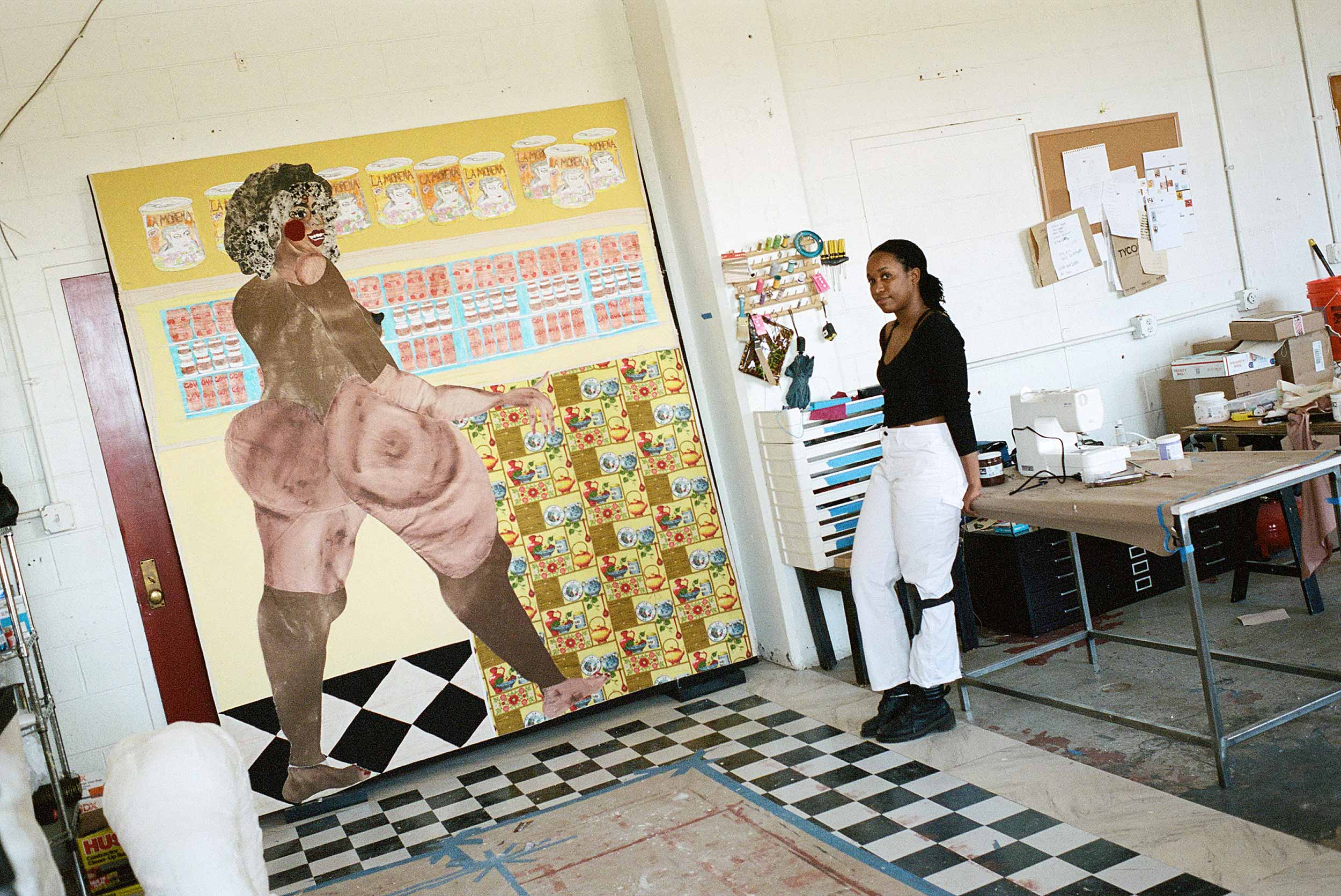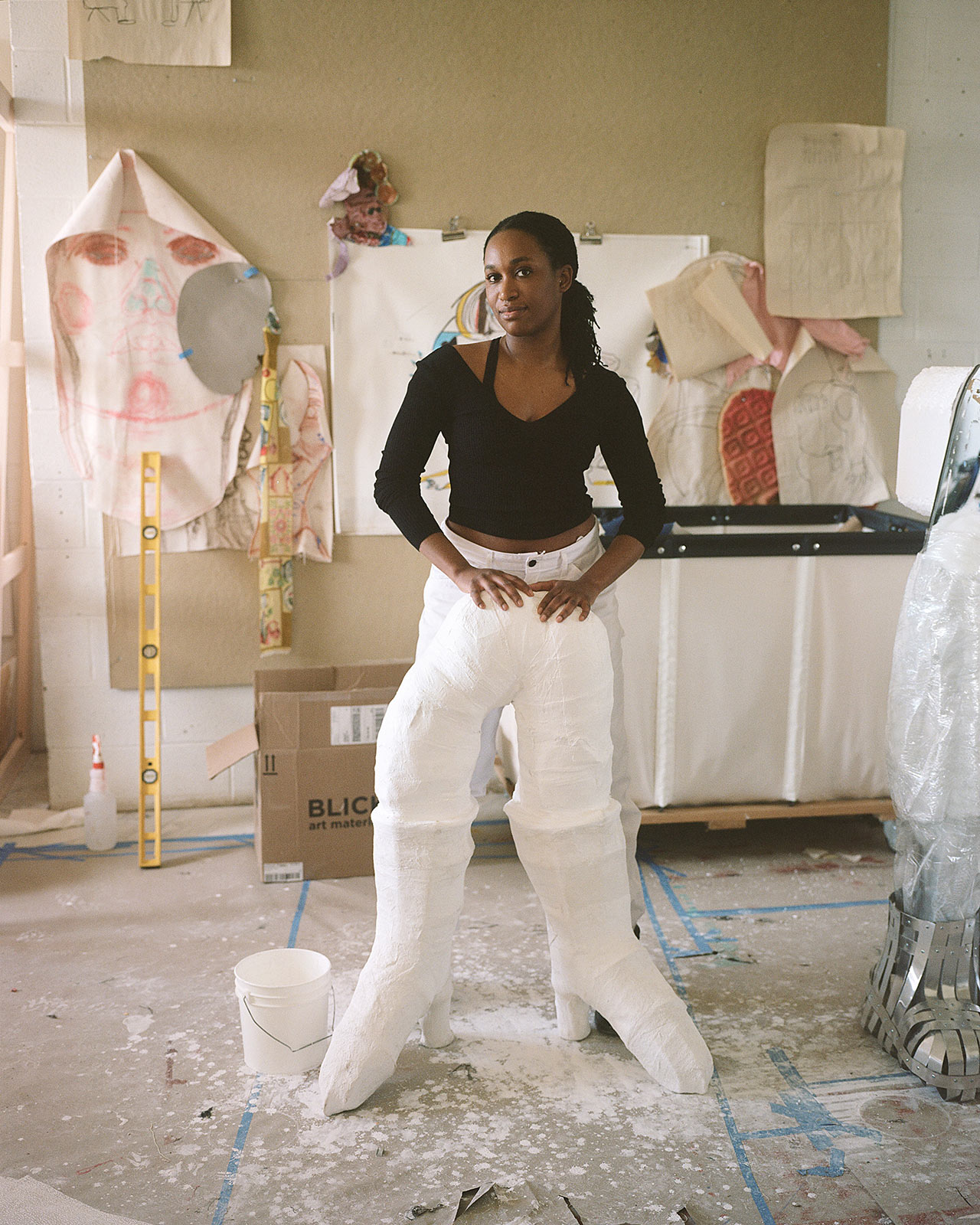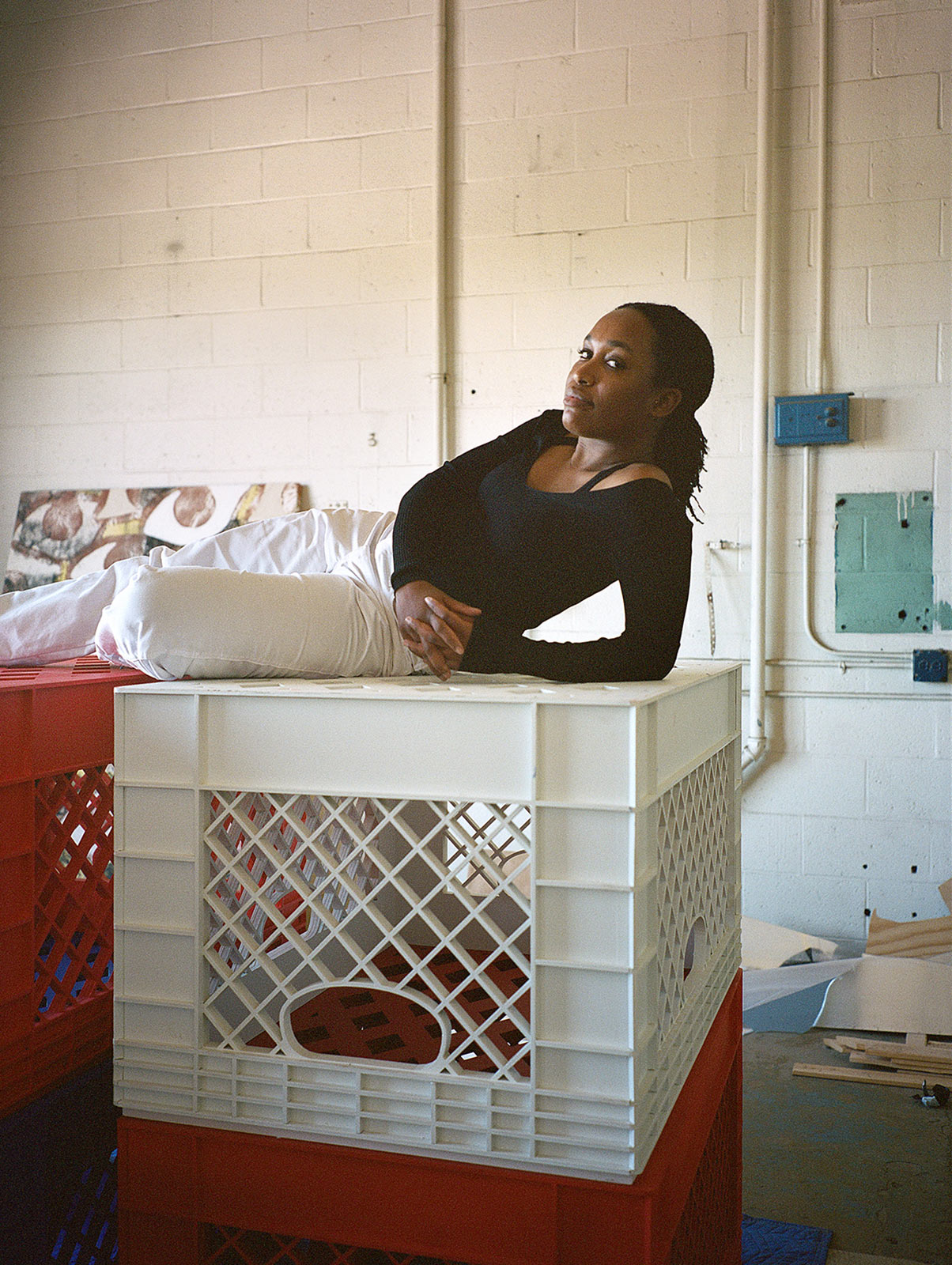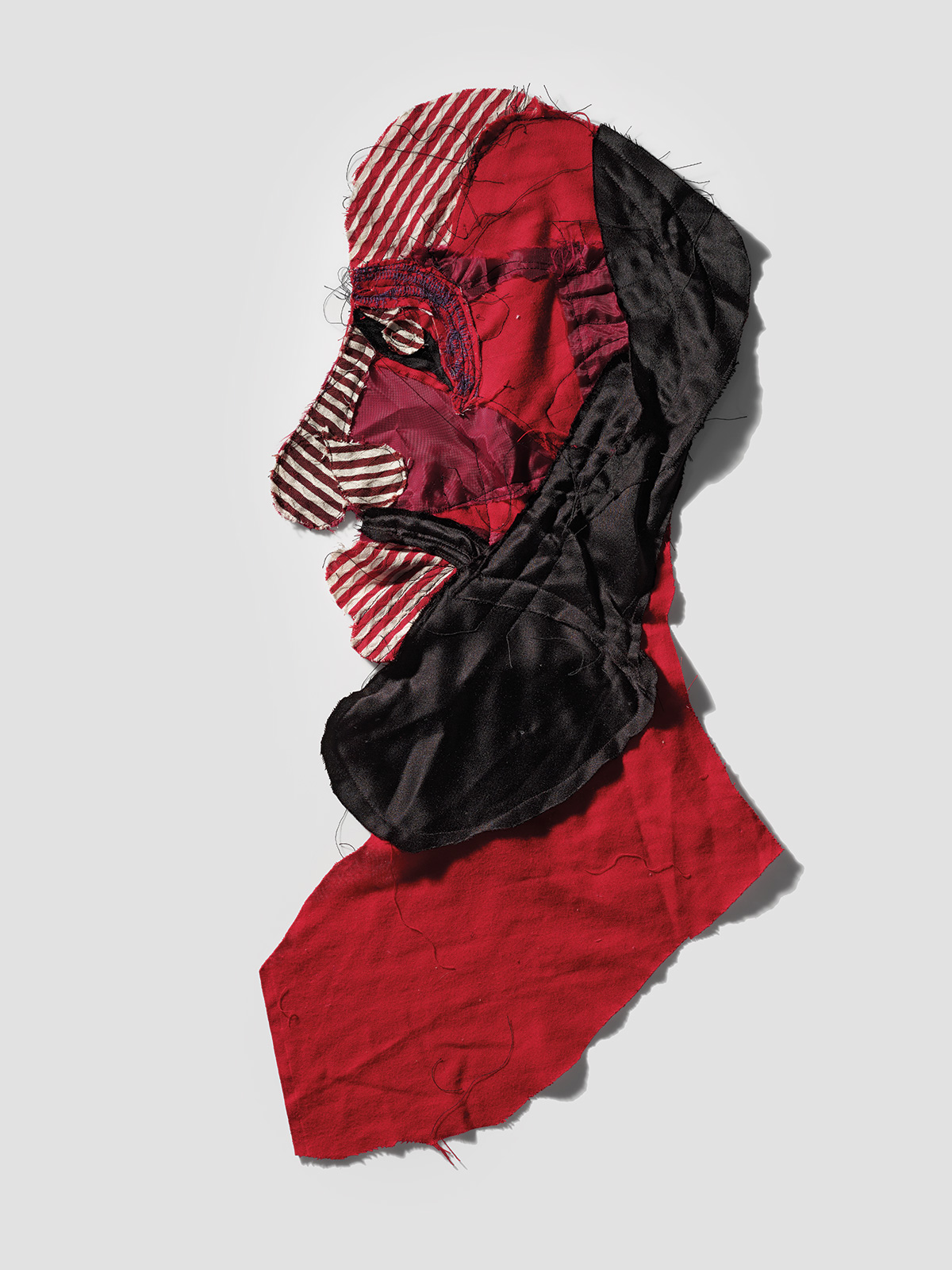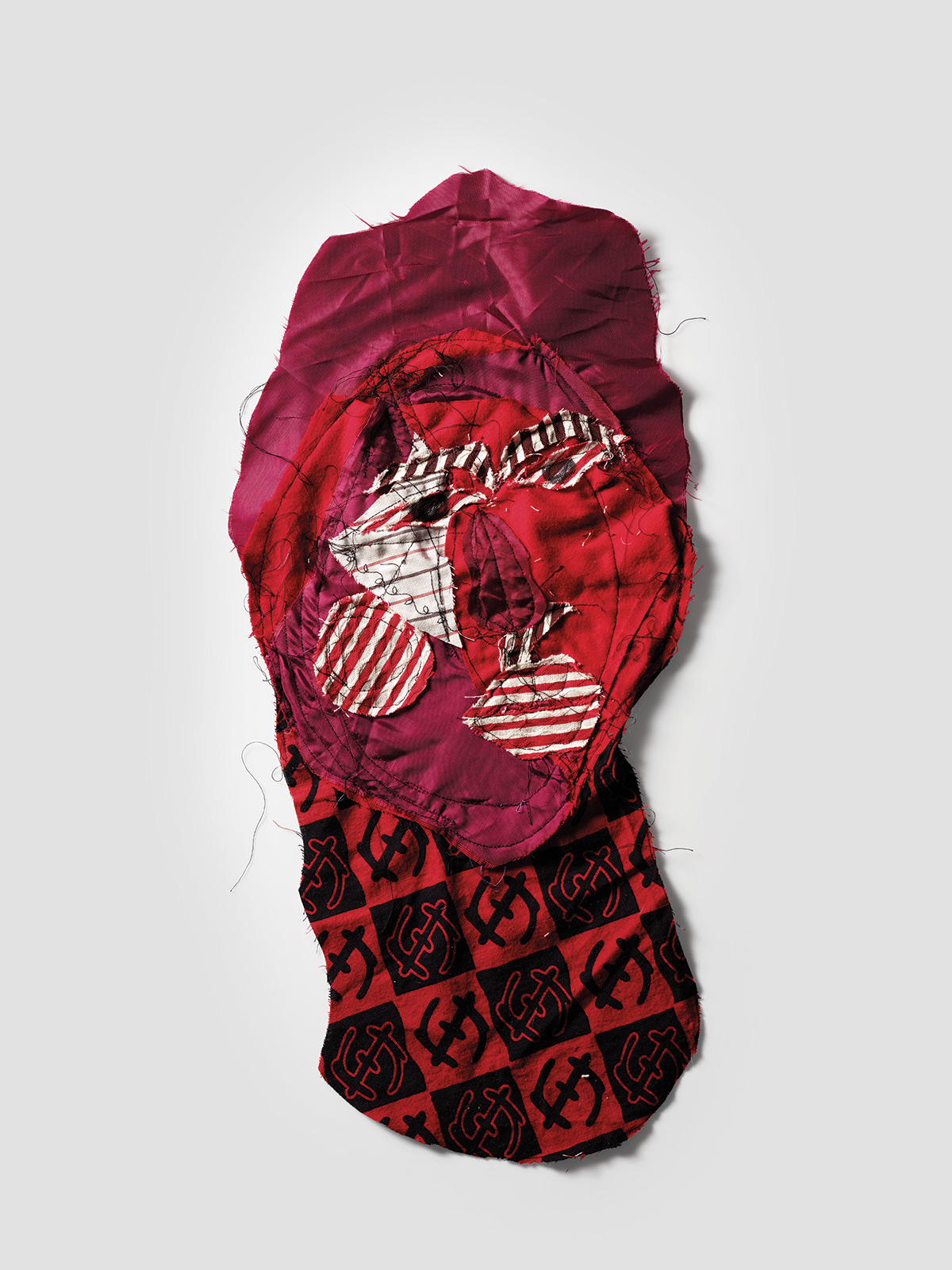Following her portfolio in Document's S/S 2019 issue, the New York-born-and-bred artist discusses her process, her inspirations, and why she's so drawn to the color red.
For Document S/S 2019, Harlem-born and based artist Tschabalala Self contributed a series of faces, carefully stitched together from assorted scraps of fabric layered atop one another, sometimes finished with an array of washes, each one forming its own visual narrative. Writer Sascha Bonét outlined Self’s ability to dismiss the white gaze in her work, allowing black people to have the privilege to just be. Self continues to rise as her practice evolves; she had an exhibition at the Frye Museum in Seattle that ended earlier this spring, has a current show at the Hammer Museum in Los Angeles through June 9, and she’s part of a three-person exhibition of work by Studio Museum Artists in Residence at MoMA PS1 that opens June 9. Document caught up with Self to get the story behind the series, which she has been working on for the past year for the MoMA PS1 show. Self revealed where she finds the fabric for her work, why she felt compelled to use the color red, and what’s behind the importance of the gaze in her work.
Ann Binlot—All the works in your portfolio are titled WIP for Work in Progress. What are you creating these pieces for?
Tschabalala Self—The works in my portfolio are mostly works in progress for my upcoming three-person show at MoMa PS1. This group show is for the Studio Museum in Harlem’s AIR program and will open on June 9. I have been working on these pieces for the last 12 months. I usually like to start with a figure’s head.
Ann—Where do you find your fabric?
Tschabalala—I purchase most of my fabric, mostly from fabric stores—I like to buy fabric in person. When I go to a new city I like to buy fabric. Some is from my family home. My mother collected fabric as well.
Ann—Tell me about your process. What goes into making one of these works?
Tschabalala—There are many steps that go into making one of these works. Many of the paintings begin from me drawing directly onto canvas or fabric to sketch out the design for the figure. Other works are born purely from the scrap, sewing bits and pieces together until a bodily form appears.
Ann—Who are these people?
Tschabalala—These people are from my past, present, and future.
Ann—What are some of the narratives behind the figures in the works?
Tschabalala—Many of the narratives revolve around an existential phenomena, introspective thought, or interpersonal relationships.
Ann—Some of the faces are red. Why is red such a dominant color in the series?
Tschabalala—I was very attracted to the color red this past year, perhaps it relates to a sense of urgency.
Ann—The faces show so many types of emotions. Why is the gaze so important in your work?
Tschabalala—The gaze is so important to me because it can communicate so much. The face is the most expression part of the body. I try to communicate my subjects’ sentiments through their expression and gaze.
Ann—What do you think about the current state of the art world? What do we need to see more? What do we need to see less?
Tschabalala—I think less is more.
Ann—What are you hoping that viewers take away from seeing this work?
Tschabalala—I hope this portfolio peaks interest in my work for viewers who are unfamiliar with my practice and give insight into my process for those who are.


